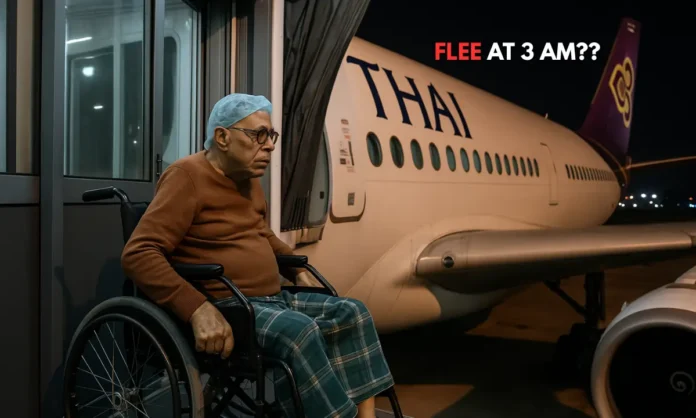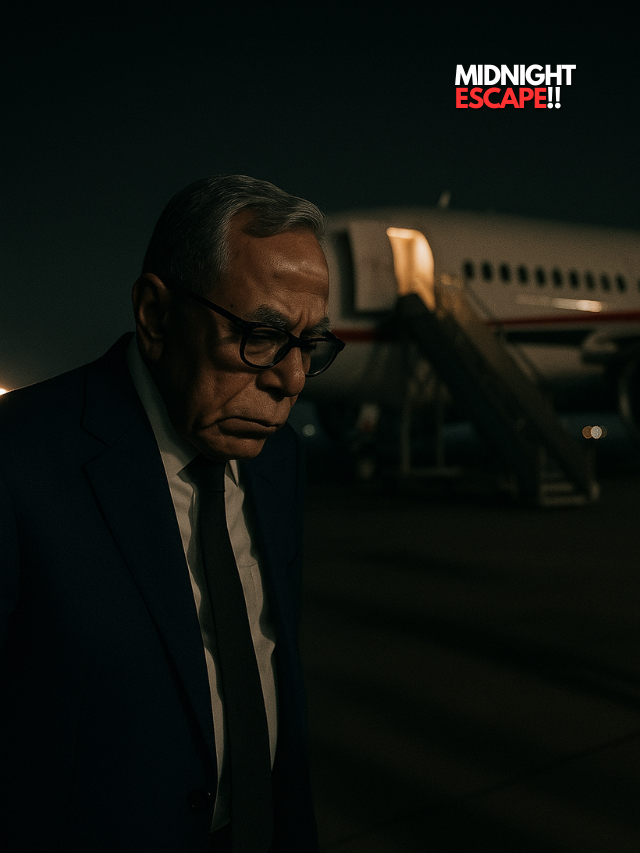Summary
- Former Bangladesh President Abdul Hamid left for Thailand at 3 am, allegedly to avoid trial for protest-related killings.
- Interim government led by Muhammad Yunus has launched a probe and suspended officials for facilitating his escape.
- Hamid’s departure follows the banning of Sheikh Hasina’s Awami League under new anti-terror laws.
Wheels, Lungi, and a Wheelchair: Inside Abdul Hamid’s Quiet Exit
At 3 am, as Bangladesh slept, a wheelchair-bound former president—wearing a lungi—quietly boarded a Thai Airways flight at Dhaka airport. That man was Mohammad Abdul Hamid, once the ceremonial face of Bangladesh’s republic, now an accused in a murder case linked to the brutal suppression of anti-Hasina protests in 2024. His destination: Thailand. His reason, as claimed by family members: urgent medical treatment.
But for the interim government led by Muhammad Yunus, the timing and manner of Hamid’s exit raise questions far beyond health. The optics alone—CCTV images, a silent boarding, no alerts triggered—have sparked a firestorm across a country still reeling from the fall of the Awami League. Within hours, the government suspended security officials and launched a high-level probe.
Hamid’s departure was not just discreet—it was historic. For the first time in Bangladesh’s democratic timeline, a former president has quietly exited the country while facing serious legal charges, including complicity in the deaths of unarmed protesters.
🚨 🚨 #BreakingNews Storm in Bangladesh as ex-President leaves for Thailand in lungi on 3 am flight https://t.co/U4yKY4FRCe
— Instant News ™ (@InstaBharat) May 13, 2025
Storm in Bangladesh as exPresident leaves for Thailand in lungi on am flight#TrendingNews #BigBreaking
Fugitive or Patient? Conflicting Claims and Rising Suspicion
- Hamid is a co-accused in a murder case filed at Kishoreganj police station alongside Hasina and her aides.
- Interim government formed a probe committee led by Education Adviser CR Abrar.
- Family claims Hamid left for medical treatment; critics allege state-assisted escape.
- Suspended officials include airport security and immigration staff.
The charges against Hamid stem from the deadly crackdown on protesters in 2024, when mass agitations—originally anti-reservation in nature—morphed into full-blown opposition to Sheikh Hasina’s rule. The interim government claims the former president was among those who authorized, or at least abetted, the deadly force used against demonstrators.
That context makes his unannounced departure even more controversial. Opposition figures like Hannan Masud allege that Hamid’s escape was facilitated by powerful actors still sympathetic to the Awami League, possibly including sitting President Mohammed Shahabuddin Chuppu.
For activists like Students Against Discrimination (SAD), the group that triggered the original protests, the message is clear: justice is being subverted. They’ve demanded arrests of those who allowed Hamid to leave—within 24 hours.
The Awami Collapse: From Liberation Vanguard to Banned Entity
- On May 12, the interim government officially banned the Awami League under revised anti-terror laws.
- The Election Commission has cancelled the Awami League’s registration.
- Former leaders including Hasina and her family are in exile; key properties like Dhanmondi 32 were demolished.
- The Chhatra League, once a student wing of the party, was banned in October 2024.
Hamid’s escape cannot be divorced from the broader political earthquake underway in Bangladesh. The Awami League, the party that once led the Liberation War, has been outlawed. Its top brass—including Sheikh Hasina, her children, and close allies—are now either in exile or under investigation.
The February 2025 “Bulldozer Programme” saw state-led demolitions of Awami symbols, including Hamid’s residence and even the Dhanmondi 32 museum that once honored Sheikh Mujibur Rahman. The message: the old order is not just being overthrown—it’s being erased.
Hamid, once a loyal lieutenant of Hasina and a veteran of the Awami League’s student politics, is now caught in this maelstrom. His escape doesn’t just threaten the credibility of the interim government—it risks sparking a new legitimacy crisis if justice is seen as selective or soft.
The Flight That Shook Dhaka
- Hamid’s 3 am flight on Thai Airways has sparked widespread anger across party lines.
- Political observers say this exposes serious vulnerabilities in airport and intelligence oversight.
- Hamid’s exit may inspire similar moves by other high-profile Awami League figures under probe.
- The episode is being framed as a test case for the Yunus administration’s credibility.
With social media flooded by images of Hamid in a wheelchair, the public mood is sour. This isn’t just about one man slipping through the cracks. It’s about whether the post-Hasina state machinery is capable of upholding law over legacy.
For Muhammad Yunus, who assumed power amid both popular mandate and elite suspicion, the stakes couldn’t be higher. This episode risks undoing the fragile trust his administration has begun to build. Critics will argue: if a former president can quietly flee, who else is planning their exit?
If Bangladesh’s democratic reset is to succeed, it will need more than symbolic actions like party bans. It will need visible justice—and that starts with holding every enabler accountable.
Legacy on the Run: What Hamid’s Exit Reveals
Abdul Hamid’s quiet departure is more than a scandal—it’s a mirror. It reflects the fragility of institutions, the long reach of political protectionism, and the challenges of transitional justice in post-authoritarian democracies.
For Bangladesh, this is not just about one man avoiding trial. It is about whether justice can catch up with power. Whether midnight flights can ever truly outrun memory—or accountability.



